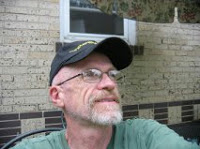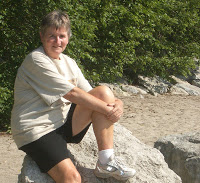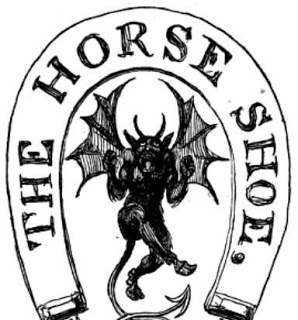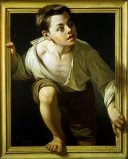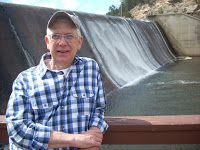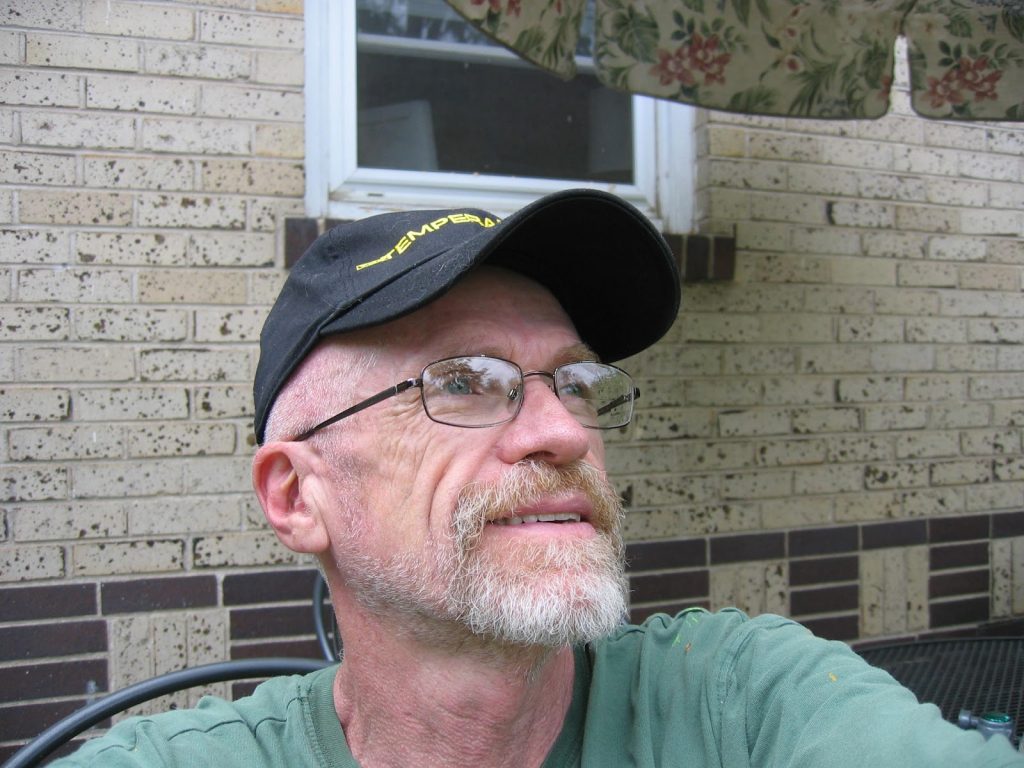Horseshoes, by Gillian
England there were still a few work horses left, plodding ahead of plows or
hauling overloaded carts. I suppose their existence was extended a few years by
the World War Two gas shortages, but before long they and their peaceful quiet days
were supplanted by dirty, noisy, tractors.
beasts, or at least their shoes, remained with us in Britain for much of the
last century. Many houses had a horseshoe nailed as a U above the front door.
It had to be that way up as it captured and contained good luck. If it came
loose and slipped sideways, or still worse upside down, it had to be righted
immediately because all the good luck was fast draining from it. For many
decades, horseshoes and pubs was apparently a mandatory pairing. I don’t
remember ever being in a pub in my younger days – and, yes, I was in quite a
few, – that did not have the obligatory horseshoes and other horse brasses
arrayed in gleaming splendor around the fireplace, above the bar, or nailed to
smoke-blackened overhead beams. Pubs in those days were relatively quiet places
intended for serious drinking, with nothing noisier than low conversations and
perhaps an occasional outburst of song. Entertainment was in the form of darts,
checkers, or dominoes, none of which create a huge clamor. They didn’t serve
food, except for so-called ‘bar snacks’ such as pickled eggs and pork crackling
so there was no endless clatter from a busy kitchen.
began to change, ramping up the noise level with juke boxes, then pinball
machines, and slot machines for minor gambling. By the 70’s many had gone from
bar snacks to full meals, generally increasing the hustle and bustle. By the
80’s, and certainly the 90’s, pubs were having to compete with the upscale chic
little wine bars that were appearing everywhere and making the old-style pub
seem dark and dingy by comparison. In many, as central heating became
commonplace, the old fireplace disappeared; and along with it, the horse
brasses. Over the same period, people became more sophisticated and less
traditional and out went many old superstitions. And along with them, out went the lucky
horseshoes. You might still see an occasional one in a remote country village
but you’d have to search.
thirty-year career with IBM in Boulder, there were horseshoe pits behind one of
the buildings, and most of the daylight hours’ groups on break or at lunchtime
would be out there tossing horseshoes at the stakes in the ground. Horseshoes
has always been, apparently, something of a blue collar game. The pits were,
I’m sure not accidentally, placed behind a manufacturing building not one that
housed office workers. Occasionally men with loosened ties and rolled up shirt
sleeves were spotted out there, but for the most part it was enjoyed by people
in jeans and t-shirts.
manufacturing disappeared there, as it did from most of in this country, being
shipped off to that unidentified never-never land called Offshore. Along with
it went the horseshoe pits and the horseshoes. Oh, it was all probably replaced
by a wonderfully-equipped exercise room with showers and steam room, free to
all employees. But I’d be willing to bet few have the fun there that we had
with those old horseshoes.
have suffered much the same fate as lucky horseshoes on cottage doors.
some in Podunk, Iowa, the American equivalent of that remote country village in
Britain, but for the most part people prefer to partake in less staid, and much
more expensive, activities these days. If, that is, they don’t just settle for
computer games.
dating back to seventeen-something-or-other or whenever, has been gutted and
completely remodeled. A huge-screen TV dominates the wall where the fireplace
once stood, surrounded by horse paraphernalia. The place is so crowded these
days that you know, the minute you enter, that you will never find anywhere to
sit. If you tried to have a conversation you couldn’t hear a word that was
said; people our age certainly couldn’t, anyway. All the earlier noise-making
machines are still there, but now there’s the blaring television and dozens of
shouting people as well. Most of those who did manage to snag a seat are
ignoring their companions and giving full attention, barring an occasional
quick glance at the TV to check on the status of Real Madrid versus Manchester
United, to their various electronic devices. Oh well, at least they are
contributing little to the unrelieved cacophony.
almost silent, snug, with its shining horse brasses reflecting the flames of
the big fire, brings tears to my eyes. Yes, I know what you’re thinking. But
Grandma, things are really so much better in so many ways than they were back
then. And I know you’re probably right. But today, just for today, I don’t
want to look at the past objectively, weighing the good against the bad and
finding it wanting. I just want to remember those horseshoe days as good. And
cry because they’re gone.
the Author
was born and raised in England. After graduation from college there, I moved to
the U.S. and, having discovered Colorado, never left. I have lived in the
Denver-Boulder area since 1965, working for 30 years at IBM. I married, raised
four stepchildren, then got divorced after finally, in my forties, accepting
myself as a lesbian. I have now been with my wonderful partner Betsy for 28
years.
Horseshoes, by Will Stanton
Who in the devil came up with this topic “horseshoes?” What am I supposed to do with it? I know that people for generations have tossed horseshoes at metal stakes as a game. My dad used to many years ago. Washington Park even included a brand new horseshoe pitch as part of recent renovation. Apparently, my great-grandfather was a skilled farrier, although I heard mention of it only once. I am not an equestrian nor a Western cowboy, so I don’t hang around horses or blacksmiths.
It seems that we non-rural folks occasionally use the odd horseshoe or two as decoration, sometimes nailing them over doors for supposed good luck. I’m told that the shoe must point up; otherwise, all the good luck will run out. So, how did that old custom of good-luck horseshoes come about? Apparently, the horseshoes keep the Devil and witches away.
Some say that the horseshoe legend goes back as far as the year 969 CE when a blacksmith named Dunstin supposedly was visited by the Devil. The visitor surprised Dunstin by requesting that he have horseshoes nailed to his feet. Dunstin was even more surprised to discover that, rather than feet, the individual had cloven hooves. Apparently, this was a dead give-away that this was not a man but, instead, the Devil himself. Dunstin quickly stated that the individual had to be placed in the oxen-lift and hoisted up in order to do the shoeing. This was agreed to, and Dunstin began his labors, deliberately making the process as prolonged and as painful as possible. Howling in pain, the Devil pleaded to cease the shoeing.
Dunstin promised to let the Devil go but with one condition, that any home with a horseshoe nailed to a wall or over a doorway was off limits to the Devil. He could not harm anyone living in or visiting that place. The Devil agreed and was released.
The historically known Dunstin became the Archbishop of Canterbury. It is said that Christians were the first to move the horseshoes down onto the center of their front and back doors to be used as doorknockers. The knock of iron on wood was thought to ward away the devil and awaken guardian angels. So, it’s advisable to have a good pair of knockers.
Legend has it that displayed horseshoes also could keep witches away. Of course in this case, we are not talking about the anthropologically accurate nature of these pre-Christian pagans. Historically, they did not believe in, nor engage in, evil. Instead, the later misrepresentation and popular portrayal of evil, old hags is addressed here.
There is a 1666 legend concerning a Goody Chandler of Newbury, Massachusetts, who claimed that her illness was caused by her very unpopular neighbor Elizabeth Morse. Once a horseshoe was nailed above the door, supposedly Elizabeth could not enter the house.
The story goes on to say that her nosy, fundamentalist neighbor William Moody removed the horseshoe, stating that he was opposed to any kind of magic, that it was just as bad as witchcraft. I know how religiously uptight some people can be. My mother’s ancestors are of Puritan stock, arriving here in 1630 with Governor Winthrop; and I suspect that they may have participated in hanging a couple of witches in Salem. Not straying outside the Bible was the official platform of the Puritan church in New England. Cotton Mather wrote in Wonders of the Invisible World that, “The Children of New-England have Secretly done many things that have been pleasing to the Devil. They say, That in some Towns, it ha’s been an usual Thing for People to Cure Hurts with Spells, or to use Detestable Conjurations, with Sieves, & Keyes, and Pease, and Nails, and Horse-Shooes… ‘Tis in the Devils Name that such Things are done.”
Removing the horseshoe from above the door was followed by renewed visits by Elizabeth, whereupon, Goody became worse and eventually died. I am sure that this tale is apocryphal, but it does reflect the mindset of the time.
A horseshoe could also be used to keep a dead witch in her grave. The towns-people of Hampton, New Hampshire, staked the heart of suspected witch Goody Cole after she died. They tied a horseshoe to the stake. Perhaps it was because of the iron, believing that supernatural creatures such as witches fear iron. In the British Isles, witches often were accused of associating with fairies, so peasants nailed horseshoes over their doors to keep fairies out of the house. I was quick to notice that there is no horseshoe nailed over the door here. What would happen if there were? Oh well, as an old Celtic blessing says. “May the charm and good luck of the horseshoe be with you and yours always!”
About the Author
I have had a life-long fascination with people and their life stories. I also realize that, although my own life has not brought me particular fame or fortune, I too have had some noteworthy experiences and, at times, unusual ones. Since I joined this Story Time group, I have derived pleasure and satisfaction participating in the group. I do put some thought and effort into my stories, and I hope that you find them interesting.
Horseshoes by Phillip Hoyle
Both my dad Earl and my maternal grandpa Charley had horseshoes. Dad had large ones he threw at an iron rod hoping to make a ringer. He smiled when he played and enjoyed his conversation with the other men. But I liked Grandpa’s horseshoes better for they represented something more essential than a game even with its skill and camaraderie. Grandpa’s horseshoes represented a way of life, one close to the soil, close to history, actually an extension of that history. The imagination of living on a tract of land that had been farmed for hundreds of years by American natives and nearly one hundred years by American immigrants from German and Sweden held more attraction for me. Grandpa’s farm and life invited me into a world in which horseshoes were actually worn by horses. I really liked that.
My father’s life was much more disconnected from the essentials of a farm. Oh he sold groceries, sometimes even local produce, but he sold them, not raised them. He worked hard, dealt with many people, hired quite a few employees, and following the example of his grocer father, sometimes gave groceries to folk who were too broke to afford them. He offered monthly credit to many people who lived on monthly-paid incomes. His life did exemplify a deep dedication to people. But his horseshoes were stored in a box on a shelf in the garage and taken out only when he and some other men were meeting at the park for a game. Grandpa’s horseshoes had holes in them to accommodate real nails to be pounded into horse’s hooves; dad’s horseshoes were only for sport.
Because of its difference from city life, the farm was magical for me. I was amazed by all its elements that didn’t occur in our home on a city lot: its location alongside a gravel road and a ravine, its tall barns and squat hen house, its underground cellar and the large wood stack, its wood-burning stoves and deep wells, its tractor and truck. The farm seemed nearly foreign when compared to the things I knew. We had cats at home, but Grandpa had dogs that brought in the cattle each evening, cows that gave milk. He sometimes had calves that were auctioned off at the local sales barn. In the cellar sat large cans of milk and eggs that Grandpa took to the mill each Saturday. The chopping block next to the wood stack displayed the heavy ax that he used to split logs for cooking meals and heating the house. And the place had stories of an ancient ceremonial ground down by the creek, a place that was used annually by the native folk who had lived there before my great grandfather. There were also stories of the old sod house my forebear built when he homesteaded the place in the 1870s, of Indians stopping by to trade, of the old two-story house that used to stand there but that burned down when two girls were playing and lit a fire in their play oven. I treasured these stories; the farm captured my imagination becoming the site of my dreams. In addition to dreams, I clearly recall the saddle that hung in the central part of the barn, the leather, wood and metal gear to hitch the horses to the wagons, and the lucky horseshoe Grandpa had tacked to the barn wall. I liked Grandpa’s horseshoes.
By contrast, Dad’s horseshoes represented another world of sports and competition. They went to church picnics at the city park. I watched the play, even tried it but was neither strong nor accurate enough in my tosses. Even as I grew my game did not improve for I still threw the shoes wildly, rarely hitting the rod or making points, certainly making no ringers. I did like watching the older guys—my dad and others—toss them. The players had their own techniques: how they held the horseshoe, how they tossed it, how they followed through the throw, how they cheered or rued the results. They relished their sport with Sears and Roebuck fake horseshoes. Although my dad liked sports and mild competition, I never got into it.
Growing up I saw my grandpa work. Farming allows that; at least on family farms where the children help. Actually I helped Grandma mostly in her garden and sometimes collecting eggs. Still, Grandpa was always around—milking cows, making things in his shop, working fields, keeping his equipment in good order. He invited me to ride with him on the tractor or to go with him in the pickup to a nearby mechanic’s shop. By contrast dad’s work took place away from home. For years I rarely saw Dad’s work at the store, only occasionally a bit of bookkeeping on a Sunday night when the store was closed. What work I did see him do was at church where he played the organ for two or three services each Sunday. I thrilled at his playing and singing, his accompanying and service music, his improvisations on hymns and gospel songs, and his tasteful selections of classical pieces. But soon I was sent off to children’s church and didn’t hear him except on Sunday evenings. When I was in junior high choir I did again hear the morning service, and in the 8th grade started conducting the choir calls to worship and amen responses to prayers. In this I got to collaborate with Dad; I liked that—very much.
Grandpa died while I was in 5th or 6th grade. I matured without him. He remained a wonderful element of my imagination inspiring me with his love, humor, and gentle kidding. Soon after his death I entered dad’s world of work at the store and, thankfully, his world of music and artistry at the church.
I keep alive a great memory of hunting with dad and grandpa. They carried shot guns. I walked along and I carried the rabbits they shot using a handle Grandpa fashioned from a branch with just a few cuts with his pocket knife. I loved that afternoon even though the rabbits got very heavy. I cherish my memory of hunting at the farm with these two men who loved me and whom I adored.
Denver, © 2 March 2015
About the Author
Phillip Hoyle lives in Denver and spends his time writing, painting, and socializing. In general he keeps busy with groups of writers and artists. Following thirty-two years in church work and fifteen in a therapeutic massage practice, he now focuses on creating beauty. He volunteers at The Center leading the SAGE program “Telling Your Story.”
He also blogs at artandmorebyphilhoyle.blogspot
Horseshoes for the Homeless by Pat Gourley
I have never had a horse in my life with shoes or without. I am aware of the game of horseshoes but this is something I have never played despite growing up on a farm. We never had horses and I never even got a pony for my birthday.
So the topic of shoes for horses is not something I can relate to at all. However, the topic of shoes for people and the feet that go into them are a frequent issue for the clients I find myself serving these days in the Urgent Care Clinic where I work.
Most folks coming into the clinic do no not have specific foot issues but two populations accessing care do. The first and larger group is the diabetics. Uncontrolled diabetes tends to affect not only circulation but in relation to one’s feet, sensation. Many diabetics often have numb feet having diminished or no feeling in their feet. This leads to bangs and bumps, to toes especially, that create small wounds they are unaware of and if not attended to can lead to big problems including infection which along with compromised circulation can eventually lead to amputation. Some of the best nursing advice out there is to look at your feet every day especially between the toes and the soles. If you can’t see down there get a friend to look for you or a small hand held mirror. If you have a friend to take a look you can also then guilt trip them into a bit of a foot rub maybe.
The other group that often has foot problems is the homeless and of course some of them are also diabetic. Living on the street or shelters if lucky often does not lend itself to good management of your blood sugars. This winter we have seen quite a few cases of frost bitten toes. Sometimes, if not too severe, this sort of resolves on its own but it can be bad enough that necrosis sets in and parts or sometimes-whole toes have to come off.
So perhaps one of the most useful interventions I can provide for homeless folks these days are dry socks. I am sure you have seen these hospital issue socks perhaps you have even worn a pair for a while. The current ones we have are grey or green with these raised horizontal racing stripes top and bottom I suppose to create some traction and prevent slips. If we have them I always prefer giving out the green ones, it really is a pretty shade of green.
One of my recent homeless foot issues involved a fellow with some rather significant frost bite that he had been neglecting and so in addition to some rather intense probably foot fungal odor I think there was bit of rotting flesh involved. The smell made my old nurse eyes water to say the least. I drew the short straw and got to try and get him to clean up his feet a bit before hitting the streets again. He was having none of it saying he had been at another hospital the night before and they had tried to clean up his feet and the pain was unbearable.
One technique is to use shaving cream on them, which can be less astringent than most soap. He was having none of that either. His plan was to get his check the next day and a
cheap hotel room where he could clean them up on his own. He wasn’t a shelter guy so the plan was to spend one more night outside. This was mid-week last week with temps in the single digits. The shoes and socks he had were of course wet despite the plastic bags he had lining them. He was definitely not going to part with the shoes which he said were very fine just wet. He did however take a pair of dry socks I gave him, green ones of course. This was the only part of our interaction that seemed to elicit genuine appreciation on his part.
These folks, during inclement weather, can spend the night in the waiting room once we have addressed as best we can whatever brought them in though most prefer to head out no matter what the weather. If they come in late in the day with some issue they feel can’t wait until the next morning they often then miss the cut-off time, usually early evening, to get into a shelter for the night.
So the topic of horseshoes made me thing of one more crazy-ass aspect of life in America in 2015 and that is that our horses often have better foot wear than our homeless. I might start carrying a dry pair of socks or two and on snowy, wet, cold days offer them to folks I encounter on the corner with their signs. A more useful gift than spare change perhaps. Maybe I can appropriate a few of the green pairs and hand them out some wintry nights on my walk home from work.
© March 2015
I was born in La Porte, Indiana in 1949, raised on a farm and schooled by Holy Cross nuns. The bulk of my adult life, some 40 plus years, was spent in Denver, Colorado as a nurse, gardener and gay/AIDS activist. I have currently returned to Denver after an extended sabbatical in San Francisco, California.
